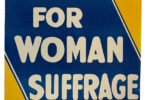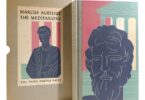Following the end of the Civil War in the spring of 1865 and the ratification of the 13th Amendment on December 6, 1865, slavery legally ended in the United States, and the country moved into Reconstruction. Historian W.E.B. DuBois described Reconstruction as “a brief moment in the sun,” but that moment ended in 1877 with the election of Rutherford B. Hayes to the White House and the withdrawal of Federal troops from the South.
As the nation struggled to heal and figure out a way forward, books were a critical vessel to record the space in time and offer insight, clarity, hope, and motivation.
Memoirs
Slave narratives, such as Behind the Scenes; or, Thirty Years a Slave and Four Years in the White House (1868), continued to be published. This particular volume was written by Elizabeth Keckley, Mary Todd Lincoln’s seamstress and friend, and gives insight into the aftermath of President Lincoln’s assassination. However, her historical documentation came at a high price. The book did not sell many copies, and Keckley was attacked for divulging personal information and correspondence regarding the Lincolns. Her book went against social mores, and some said it proved the danger of educating Black women. That didn’t stem the tide of other Black writers publishing during this time.
The end of the war and the victory of the abolitionist cause created room for the publication of memoirs recounting lives outside of slavery, depicting a broader experience and sharing more diverse voices.
Memoirs provide illustrations of not only the struggle but also victory. The Civil War was a theme that every American at the time could relate to, and like Louisa May Alcott’s Hospital Sketches (1863) and The Personal Memoirs of Ulysses S. Grant (1885), there were memoirs by African Americans involved in the war as well.
Henry O. Flipper, the first African-American to graduate from the United States Military Academy, published The Colored Cadet at West Point (1878), recounting his experiences. A later posthumously published title by Flipper, Negro Frontiersman: The Western Memoirs of Henry O. Flipper, was released in 1963.
Susie Taylor was the only African-American woman to publish a memoir of her wartime experiences when Reminiscences of My Life in Camp with the 33rd United States Colored Troops, Late 1st S.C. Volunteers, was published privately in 1902. In 1988, Markus Wiener Publishing released the book under A Black Woman’s Civil War Memories.
Outside memoirs dealing specifically with the War, the South figured into many books as a character all its own, a theme that still resonates in American Literature today.
The prolific writer William Wells Brown published My Southern Home: The South and Its People in 1880, detailing his search for a home in a land marked with racism and slavery.
Anna Julia Cooper, born enslaved in 1858 in Raleigh, published her first book, A Voice from the South (1892), which championed African American women’s education. She later became the fourth African American Woman to earn her Ph.D. at the age of 67. For her thesis, Cooper edited and put the epic poem Le Pèlerinage de Charlemagne into modern French. She also added a preface, notes, and her own French-English glossary.
Like Cooper, Amanda Smith was also born enslaved. Her parents heavily valued education and found ways to teach their children no matter their circumstances. Smith later became a Methodist preacher and, in 1893, published An Autobiography, The Story of the Lord’s Dealing with Mrs. Amanda Smith, the Colored Evangelist Containing an Account of Her Life Work of Faith, and Her Travels in America, England, Ireland, Scotland, India, and Africa, as An Independent Missionary. The proceeds from the book helped her open The Amanda Smith Orphanage and Industrial Home for Abandoned and Destitute Colored Children outside of Chicago.
Frederick Douglass also published a memoir after the War, his third, Life and Times of Frederick Douglass (1881)
Poetry & Novels
Leading African American writers of the time also found a creative outlet and expression in poetry and novels.
Albery Allson Whitman, acclaimed as the “Poet Laureate of the Negro Race,” was born into slavery in Kentucky in 1851. He attended Wilberforce University in Ohio in 1870 and later became a pastor. In 1877 his first book of poetry, Not a Man, and Yet A Man, was published, followed by The Rape of Florida in 1884 (later republished as Twasinta’s Seminoles). Whitman died in 1901, at forty-nine, of pneumonia, the same year as his last collection, An Idyl of the South: An Epic Poem in Two Parts, was published.
The influential abolitionist, teacher, and writer Frances Harper was born free in 1825 in Baltimore, Maryland. She published her first poetry collection, Forest Leaves, or Autumn Leaves, in 1845. Her collection Poems on Miscellaneous Subjects (1854) was a commercial success, making her the most popular African American poet before Paul Laurence Dunbar. Her short story “Two Offers” was published in the Anglo-African in 1859, making literary history as the first short story published by a Black woman. Sketches of Southern Life (1872) detailed her experience touring the South and meeting newly freed Black people. She also published one of the first novels by an African-American woman, Iola Leroy; or, Shadows Uplifted, in 1892.
Paul Laurence Dunbar was born after the War in 1872, although his parents were both formerly enslaved. He was the only African American in his high school class in Dayton, Ohio, and he showed promise as a poet from an early age. Although his financial situation prevented him from continuing his higher education, he continued to pursue writing while working to support his mother, and in 1893 published his first collection of poetry, Oak and Ivy. His first novel, The Uncalled (1898), was considered one of the first to cross the ‘color line’ as Dunbar wrote about white characters. Dunbar was very prolific during his short career. Before dying at the young age of 33 from tuberculosis, he published a dozen books of poetry, four books of short stories, four novels, lyrics for a musical, and a play.
Alice Moore Dunbar-Nelson, who was briefly married to Dunbar from 1898 until his death in 1906, published Violets and Other Tales, a collection of essays, short stories, and poems, in 1895.
Mary Weston Fordham, a poet and teacher, was born in Charleston during the Civil War. Her collection of poems, Magnolia Leaves, published in 1897, reflects African-American life after the Civil War. It contains popular themes of the time – sentimentality, moral virtues, death, motherhood, patriotism, and Christianity. Booker T. Washington wrote the introduction for the collection.
Pauline Hopkins was a well-known and prolific author at the turn of the century. Born in Boston in 1859, her first known work, Slaves’ Escape; or, The Underground Railroad, was performed in 1880. Her first novel, Contending Forces, was published by a Black publishing house, The Colored Co-Operative Publishing Company, in 1900. Hopkins serialized three other novels in Colored American Magazine: Hagar’s Daughter: A Story of Caste Prejudice, Winona: A Tale of Negro Life in the South and Southwest, and Of One Blood; or The Hidden Self.
The best-known African-American author at this time, Charles W. Chestnutt, explored issues of race and identity in the post-Civil War South. A few of his most famous works were The Conjure Woman and Other Conjure Tales (1899) and The Wife of His Youth and Other Stories from the Color Line (1899), and The Marrow of Tradition (1901), a political-historical novel of the 1898 Wilmington Massacre. Two of Chestnutt’s books were adapted as silent films in the 1920s by the African-American director and producer Oscar Micheaux.
Sutton Griggs, an author, Baptist minister, and social activist self-published his novel Imperium in Imperio (1899) and sold it door-to-door. The novel is a historical fiction exploring the radical development of a black nation amid Jim Crow. In 1901 Griggs founded Orion Published Company to publish and sell books to the African American market.
Caleb, the Degenerate: A Study of the Types, Customs, and Needs of the American Negro (1901), by Joseph Seamon Cotter, was the second play ever written by an African-American man to be published. Cotter was a poet, playwright, educator, and community leader in Louisville, Kentucky. He also published many volumes of poetry, including A Rhyming (1895), Links of Friendship (1898), A White Song and a Black One (1909), and Collected Poems (1938).
A classic text that remains on reading lists today, Autobiography of an ex-Colored Man (1912) by James Weldon Johnson, was initially published anonymously. The fictional account of a young biracial man living in Post-Reconstruction America is the earliest first-person novel published by an African American author.
Scholarship and Journalism
The Reconstruction Era was a rich time for leading intellectuals arguing new thoughts and iconic activists paving the way for justice.
In 1896, Daily Resolves, Booker T. Washington‘s first book, was published. This rare and fragile compilation of life-affirming aphorisms, designed in England in a calligraphic style and beautifully printed in Bavaria, was a short book intended for white audiences. The educator followed up that publication with The Future Of The American Negro in 1899, which presented his views on education and progression. His autobiography, Up From Slavery, published in 1901, was a best-seller and remains the most widely read of the 14 books he published.
While Booker T. Washington advocated for industrial education and compromise, W.E.B. Dubois, a prominent sociologist, historian, and activist, thought compromise was harmful and that African-Americans should pursue professional education. His book, The Souls of Black Folk (1903), is a series of essays presenting his arguments and ideas of progression.
Another influential activist of this time, Ida B. Wells, documented lynching through her pamphlets called Southern Horrors: Lynch Law in all its Phases (1892) and A Red Record (1893), the first statistical record of the history of American lynchings. Her brave writing brought attention to the deadly and unjust practices protected by lies and perversions of justice.
As Reconstruction faded into History and Jim Crow took over, a Great Migration began as people moved from the rural agricultural South to the more industrialized cities of the North. With this migration came a golden age for artists, writers, and musicians known as ‘The Harlem Renaissance.’ But the Renaissance could only have happened because of the stones the pioneering writers and artists laid before them.
Amy C. Manikowski is a writer living in Asheville, NC.










